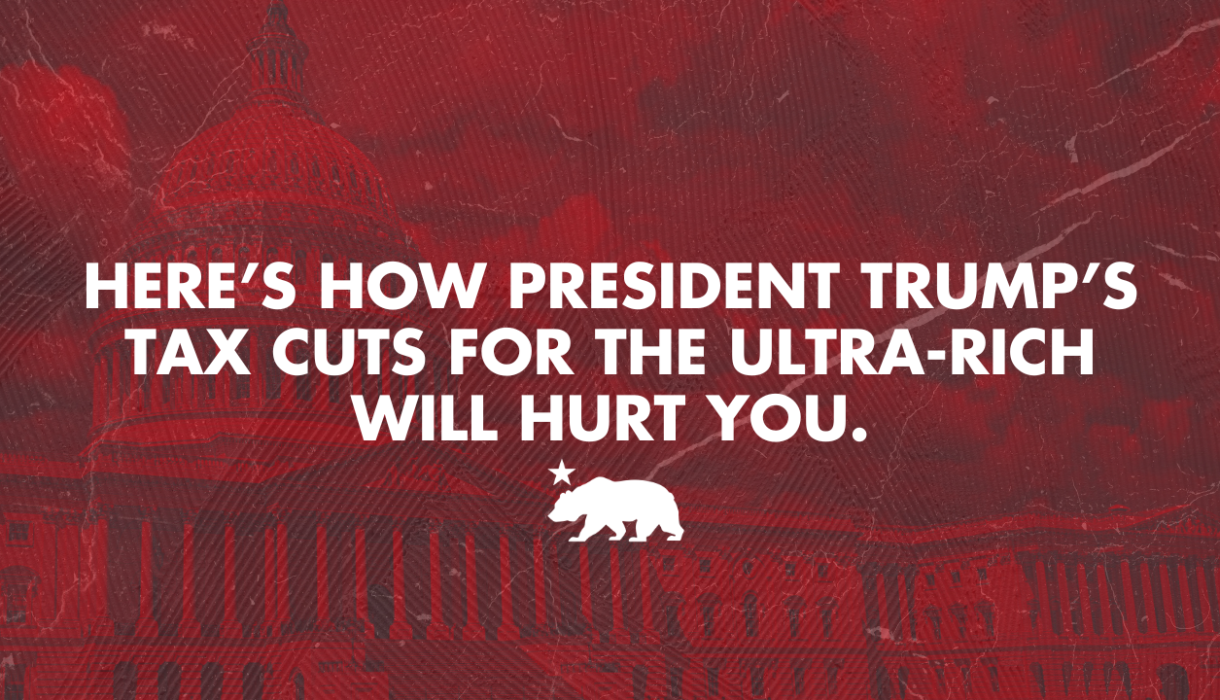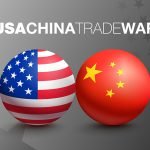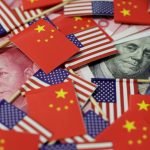
When “Beautiful” Bills Break America: A Personal Dissection of Wealth Inequality and the Real Cost of Trump’s Economic Policies.
Posted in :
Trump’s so-called “beautiful bills” masked brutal tax cuts that favored the wealthy, leaving America’s middle class behind. As political corruption grows and inequality deepens, global shifts like BRICS offer a new path forward. It’s time to rethink the system and demand true economic democracy.
Deeply personal and analytical dive into how recent U.S. economic policies—especially under Trump—have accelerated wealth inequality. We’ll use vivid stories, eye-opening stats, and a few sharp detours into European comparisons and global economic shifts. Expect a frank look at corruption, redistribution, and the unexpected optimism sparked by new global power dynamics from BRICS. Told with a human touch, this isn’t just numbers—it’s a lived experience of America’s unraveling economic fabric.
A few weeks ago, while chatting over burnt coffee at an old friend’s kitchen table, I heard the phrase: “big, beautiful bill”—the kind politicians love to tout. It got me thinking about how the legislation they brag about so often hides ugly truths. As I mulled over my own mortgage statements and thought back on my college debts, I realized just how disconnected lawmakers seem from the gritty reality of most Americans. This post isn’t just an analysis—consider it my personal tour through the winding backroads of inequality, political deals, and the surprising hope that a new global order might bring.
The Masked Ugliness of ‘Beautiful’ Bills – How Tax Cuts Deepen America’s Divide
I remember sitting in front of the TV in late 2017, watching the news as Congress celebrated the passage of what they called a “big, beautiful bill.” The Tax Cuts and Jobs Act was hailed as a triumph of Trump Economic Policies—a promise that prosperity would trickle down to all Americans. But as I listened, I felt a sense of déjà vu. I’d heard these promises before, and I couldn’t shake the suspicion that the real Tax Cuts Impact would be far from what was advertised.
Let’s talk about the reality behind the rhetoric. The United States, once less unequal than Western Europe after World War II, has since reversed course. Today, we are one of the most unequal economies in the developed world. The numbers are staggering: the bottom 50% of Americans—about 165 million people—own just 2% of the nation’s wealth. The next 40% (the so-called “middle class”) hold 30%. That leaves the top 10% controlling two-thirds of all income. And within that elite, the top 1% alone held 35% of U.S. wealth as recently as 2022.
These aren’t just Economic Inequality Statistics for the record books. They’re a snapshot of daily reality for millions. When half the country is scraping by on a sliver of the nation’s resources, the idea of “one person, one vote” starts to feel hollow. As economist Richard Wolff put it:
“You could never dream of a democracy, one person, one vote, if you take 90% of the people and tell them you live on one third of the income.”
So what did the 2017 tax cuts actually do? Despite the political fanfare, the real Tax Cuts Impact was a massive upward Redistribution of Wealth. Corporations and the ultra-wealthy—those who needed help the least—were handed enormous tax breaks. Research shows that the top 20% of earners in America now make at least 4.6 times more than the bottom 20%, and in some cities, the gap has widened to more than seven times. The wealthiest Americans not only kept their outsized share—they increased it, while the rest watched their piece of the pie shrink.
This isn’t just a theory. It’s history-in-the-making. Over the past 40 years, both Republican and Democratic administrations have presided over a steady upward flow of wealth. The 2017 tax cuts, however, were especially egregious. They slashed corporate tax rates and offered generous loopholes for the rich, all while reducing government revenue and ballooning the deficit. Ironically, the government then borrows money—often from the very rich who benefited from the cuts—to cover the shortfall, putting the burden back on ordinary taxpayers.
The political narrative, of course, was all about growth and jobs. But the reality? Most of the benefits went to those at the top, with little evidence that prosperity trickled down. The Wealth Distribution America now faces is more lopsided than ever, and the gap keeps widening. Studies indicate that even as the stock market soared and corporate profits hit record highs, wages for most Americans stagnated. The so-called “middle class” found themselves squeezed, while the working poor struggled to get by.
It’s important to note that this isn’t just about numbers. It’s about power. When a small group controls most of the wealth, they also wield outsized influence over politics, policy, and even the national conversation. The 2017 tax cuts were not an isolated event—they were part of a long-term pattern where those at the top use their resources to shape the system in their favor.
Meanwhile, other countries have taken different paths. In places like France, for example, strong social safety nets and progressive taxation have kept inequality in check. Americans, by contrast, are told to celebrate “beautiful bills” that quietly deepen the divide. The mismatch between political promises and lived reality couldn’t be clearer.
The less-publicized truth is that upward Redistribution of Wealth is not a hypothetical risk—it’s the story of modern America. The 2017 tax cuts, and their recent revival, are just the latest chapters. As the divide grows, so does the urgency to question not just the policies, but the very system that allows such extreme Income Inequality to persist.
Corruption, Politics, and the Vanishing Middle – When Democracy is Only for the Rich
Ever get the sense that politics in America is a game rigged for the wealthy, while the rest of us are just spectators? It’s not just a feeling—research and lived experience both point to a system where Corruption in American Politics is normalized, and the real decisions are made far from the reach of ordinary voters. Let’s break down how this happens, why the middle class keeps shrinking, and what we can learn from Europe’s response to inequality.
The Senate’s Horse Trading: Trinkets for Votes, Not for You
Watching Congress at work, I’m struck by how much of the so-called “debate” is really just haggling—what some call “horse trading.” Senators aren’t fighting for your interests; they’re negotiating for little perks and favors, often to please donors or secure corporate support. The result? Bills that look “beautiful” on the outside but are ugly at their core, serving the wealthy and powerful while leaving the average American behind.
This isn’t paranoia. It’s the reality of Corruption American Politics. Lobbyists, campaign donors, and corporate interests have a seat at the table, while the rest of us are left hoping for scraps. As Richard Wolff bluntly puts it:
“The Democratic Party is so corrupted by its donors that it offers no significant opposition.”
It’s a bipartisan problem. Legislative “rewards” and backroom deals have become the norm, and the voices of everyday Americans are drowned out by the clinking of donor glasses at high-priced fundraisers.
Wealth Distribution in America: The Shrinking Middle
Let’s talk numbers. The middle 40% of Americans—what we often think of as “Middle America”—owns just 30% of the nation’s wealth. That’s less than their share of the population, and the gap is growing. The bottom half? They’re left with a mere 2%. Meanwhile, the top 10% control a staggering share of the pie. This isn’t just a statistic; it’s a snapshot of a society where opportunity is slipping away for millions.
Research shows that income inequality in the U.S. is among the highest in the developed world. The top 20% of earners now make at least 4.6 times more than the bottom 20%, and in some cities, the gap is even wider. Trump’s 2017 tax cuts only made things worse, slashing government revenue and handing more to those who already had the most. The rich, in turn, lend money back to the government, collecting interest paid by taxpayers. It’s a cycle that keeps the wealthy on top and the rest struggling to keep up.
Social Consequences: Anger, Fractures, and Lost Faith
As Wealth Distribution America becomes more lopsided, the social consequences are impossible to ignore. Communities fracture, anger simmers, and faith in democracy erodes. When people see that no matter how hard they work, they’re falling further behind, resentment grows. It’s not just about money; it’s about dignity, opportunity, and the sense that the system is stacked against you.
This isn’t a new story. History is full of moments when extreme inequality led to unrest, protest, and even upheaval. The difference now is how normalized it’s become. We’re told to accept it as the price of progress, even as the middle class vanishes before our eyes.
Comparison: US vs. European Inequality
So why do Americans seem to accept this, while Europeans push back? Here’s where the Comparison US European Inequality comes into focus. In France, for example, the government tried twice in recent years to push through policies that would worsen inequality. Both times, people flooded the streets. Their left-wing and progressive parties led the charge, refusing to let the country slide into deeper inequality.
And it’s not just protests. France guarantees five weeks of paid vacation, universal healthcare from birth to death, and free college tuition. These aren’t luxuries—they’re rights. European countries, in general, offer stronger social safety nets, keeping inequality lower and giving people a real stake in society.
In contrast, U.S. social policy is stingier, leaving millions without basic protections. The result? The social consequences of wealth inequality are more severe, and the middle class continues to shrink.
It’s clear: when democracy is only for the rich, the rest of us are left fighting for the crumbs. The question is, how long will we accept it?
The BRICS Factor and a Glimmer of Hope – Rethinking Capitalism in a Changing World
When I look at the headlines about the “big, beautiful bills” that promise prosperity but deliver deeper inequality, I can’t help but notice a shift happening far beyond the halls of Congress. The rise of BRICS—Brazil, Russia, India, China, and South Africa—has become an unexpected twist in the global story. For decades, U.S.-style capitalism was seen as the only viable path to economic success. Now, that dominance is being challenged, and the cracks in the old system are more visible than ever.
This isn’t just about geopolitics or trade deals. It’s about the very structure of our economies and who gets to make the decisions that shape our lives. The impact of BRICS is not that they have all the answers or a perfect model—far from it. But their emergence has opened up space for a real critique of capitalism, especially the employer-employee relationship that sits at its core. Suddenly, the idea that there might be alternatives to the Western economic playbook isn’t just academic theory. It’s a topic of conversation in classrooms, on social media, and even in the streets.
I was struck recently when a student asked me, “Is the U.S. system really the only way?” That question, simple as it is, would have been unthinkable in most American classrooms just a generation ago. Now, it’s a sign of how the global order is evolving. Research shows that academic and student circles in the U.S. are more open than ever to questioning capitalism itself. There’s a growing sense that the future of capitalism and economic systems is not set in stone—and that we might have a say in shaping what comes next.
It’s not just in the U.S. where these questions are bubbling up. Across Africa, I hear from colleagues and friends about the whispers of new alliances and the hope for alternatives to Western-led economics. The presence of BRICS, and especially China, has emboldened movements that once felt isolated. Now, there’s a sense that countries can look beyond New York and London for guidance—and maybe, just maybe, chart a different course.
Of course, let’s not romanticize the situation. The system is still stacked, and BRICS is far from perfect. Many of the same issues—concentrated power, lack of true democratic participation, and deep inequalities—persist within these countries as well. But the difference is that change feels possible. Among the young and the skeptical, there’s a willingness to imagine a more democratic participation economy, where decisions about production, investment, and distribution aren’t left to a handful of elites.
As Richard Wolff put it,
“The ability to question capitalism as a system has never been greater in the United States in my lifetime than it is right now.”
That’s not just rhetoric—it’s a reflection of a real shift in consciousness. Studies indicate that the top 20% of earners in the U.S. make at least 4.6 times more than the bottom 20%, and the top 1% holds about 35% of total wealth. These staggering numbers, combined with persistent racial disparities and the burden of recent tax policies, have made the costs of our current system impossible to ignore.
The rise of BRICS has not yet fundamentally challenged the employer-employee structure at capitalism’s core, but it has created a space for alternatives to be discussed. This is the glimmer of hope: an unprecedented opportunity to advocate for more democratic participation in economic decisions, to rethink what kind of future capitalism economic systems we want, and to push for a society that values equality, justice, and real democracy—not just in politics, but in our workplaces and communities.
We don’t know where this will lead. The process is messy, uncertain, and full of contradictions. But for the first time in a long while, the conversation is changing. And that, in itself, is a reason to hope.
TL;DR: America’s wealth gap is growing, fueled by well-packaged but destructive tax policies and entrenched political corruption. But, as global shifts challenge old power structures, the door is opening for more genuine democracy and a new conversation about capitalism itself. Change is tough—but the status quo isn’t sustainable.
IncomeInequality, WealthInequality, TrumpEconomicPolicies, TaxCutsImpact, WealthDistributionAmerica, EconomicInequalityStatistics, RedistributionOfWealth, CorruptionAmericanPolitics, ComparisonUSEuropeanInequality, ImpactOfBRICS,incomeredistributionAmerica, middleclasseconomicdecline, BRICSchallengetocapitalism, corruptioninAmericanpolitics
#IncomeInequality, #WealthGap, #EconomicJustice, #TaxCuts, #USPolitics, #BRICS, #CapitalismCritique, #DemocraticParticipation, #WealthDistribution, #AmericanDecline,#WealthInequality, #TrumpTaxCuts, #EconomicJustice, #MiddleClassCrisis, #CorruptionInPolitics, #CapitalismCritique, #BRICSChallenge, #USeconomy, #DemocraticParticipation, #RedistributionOfWealth

